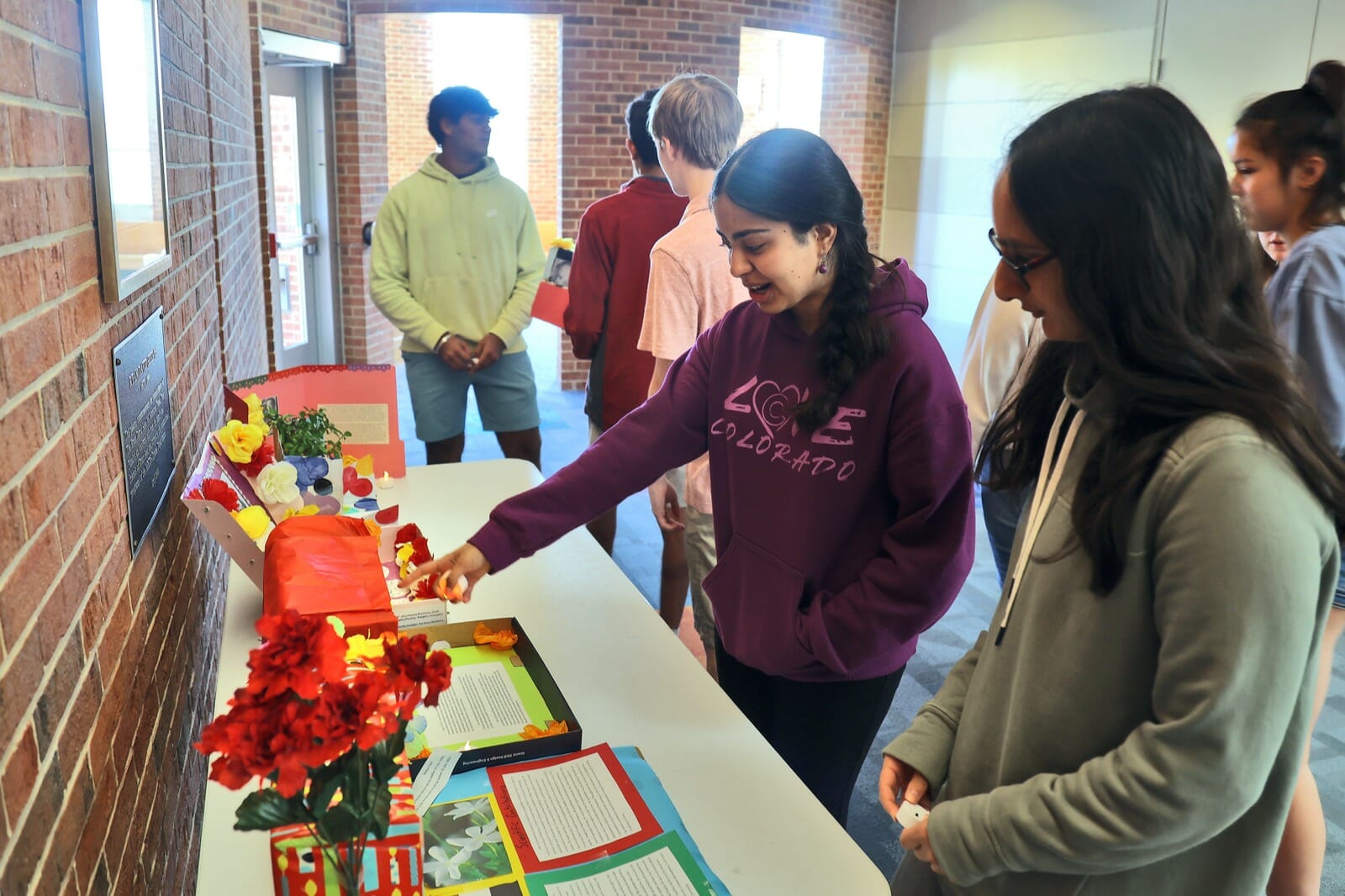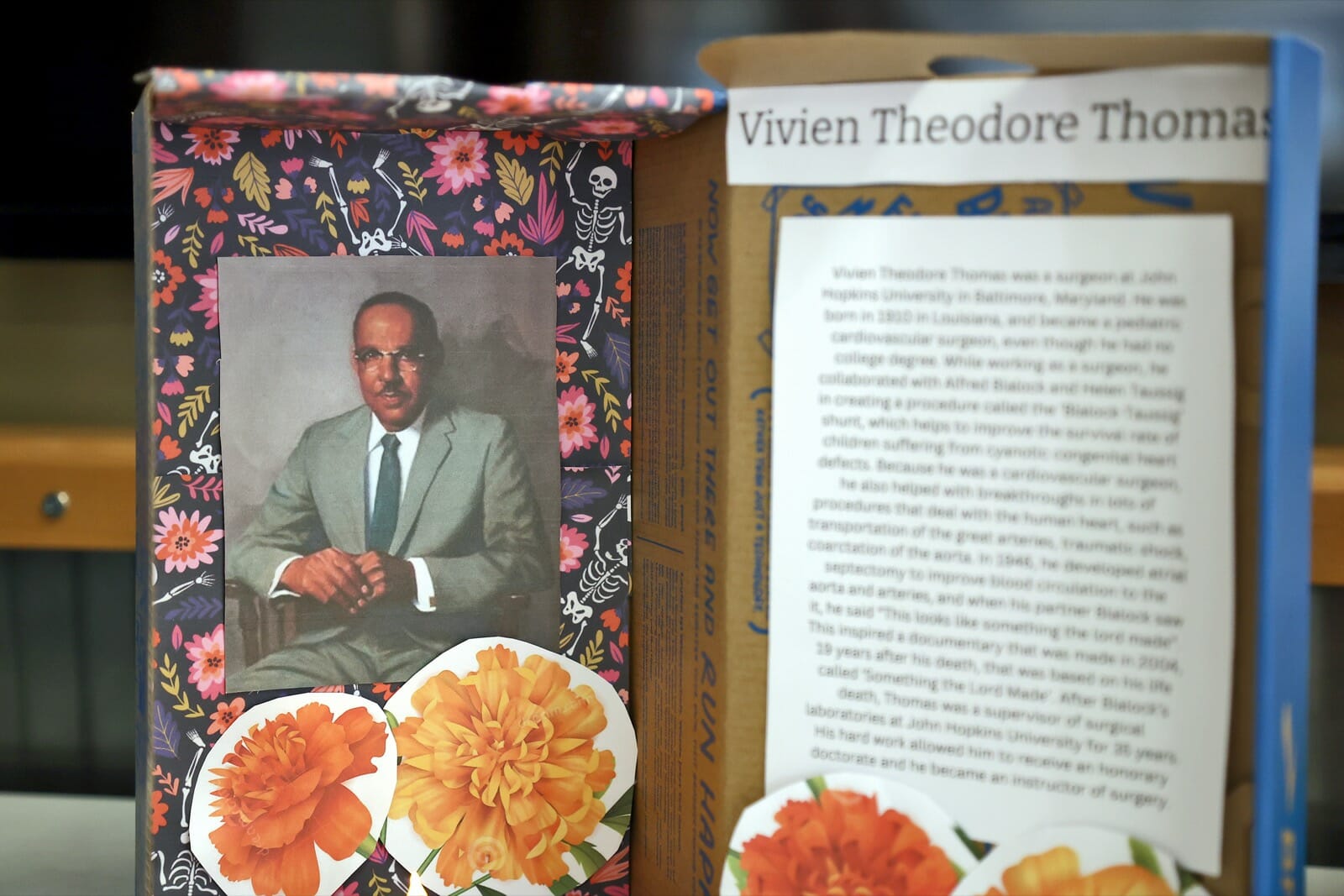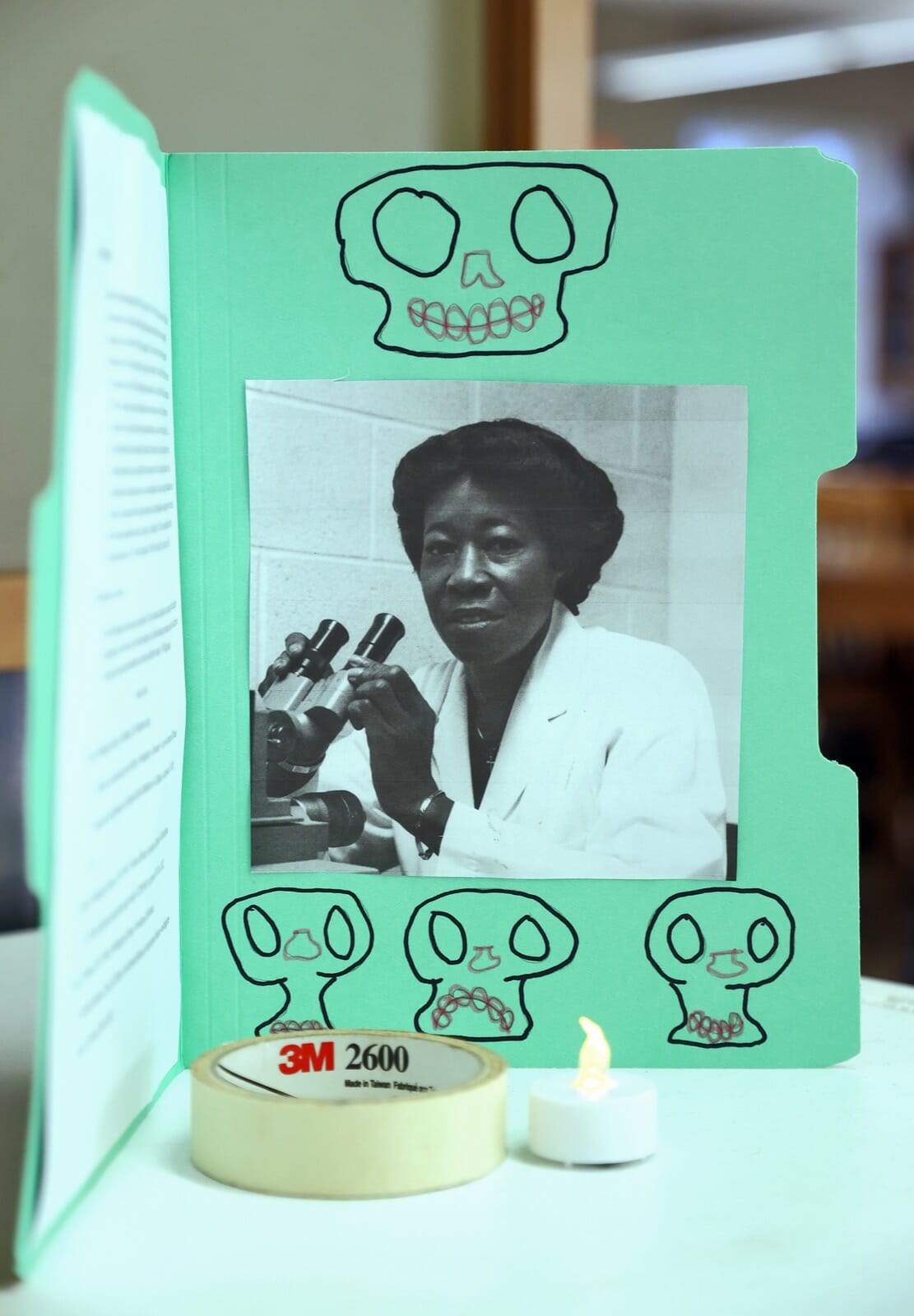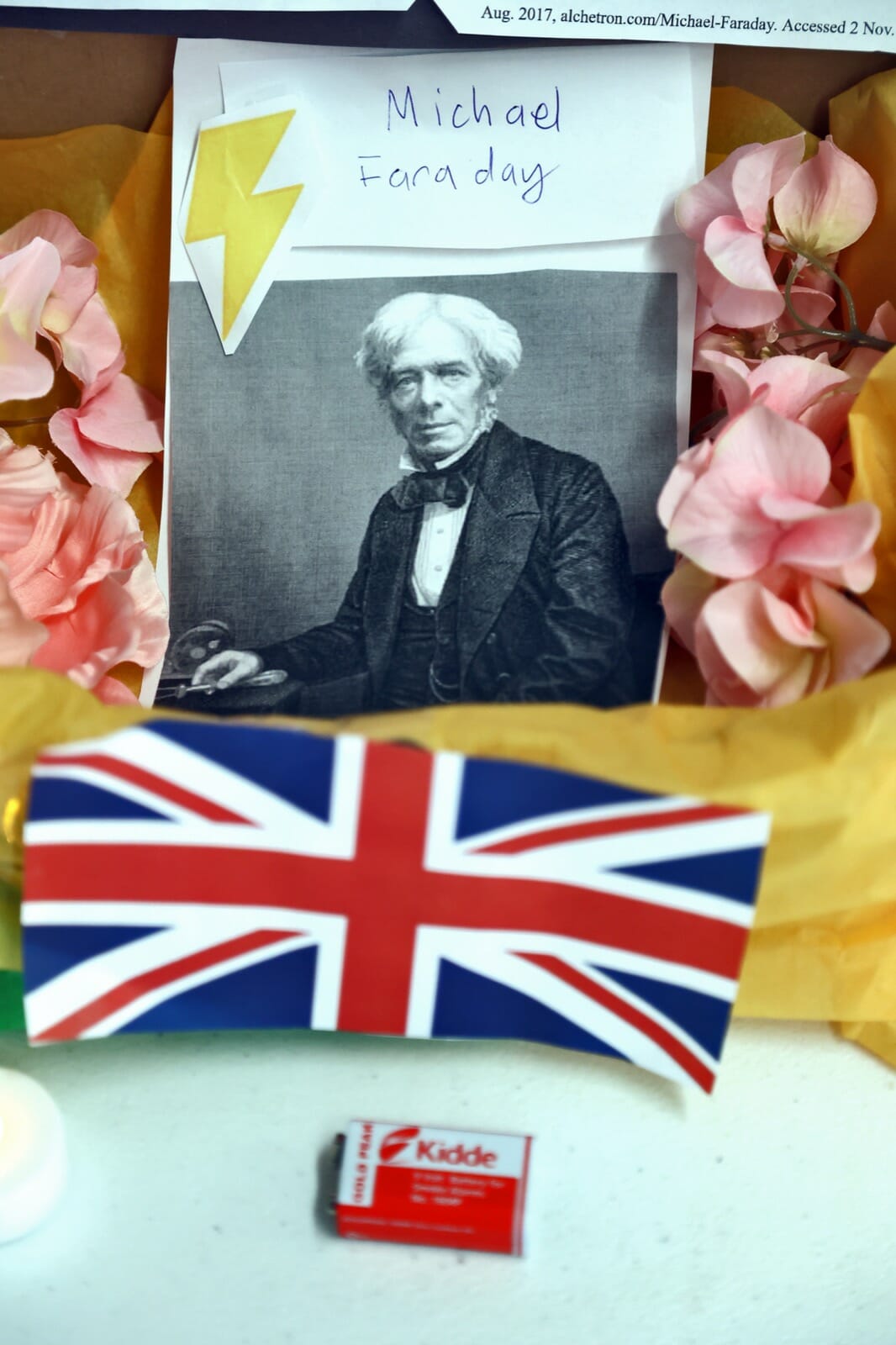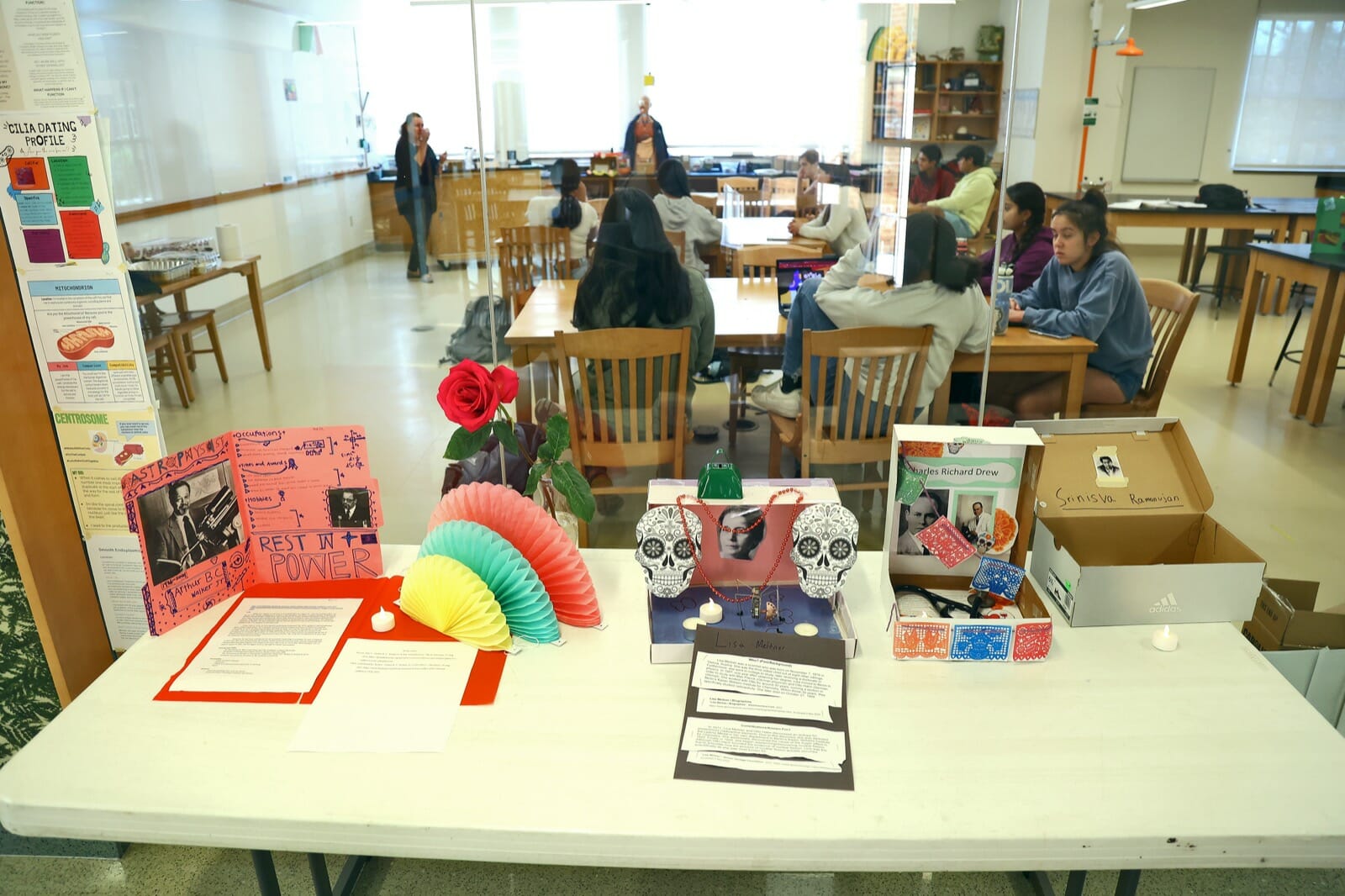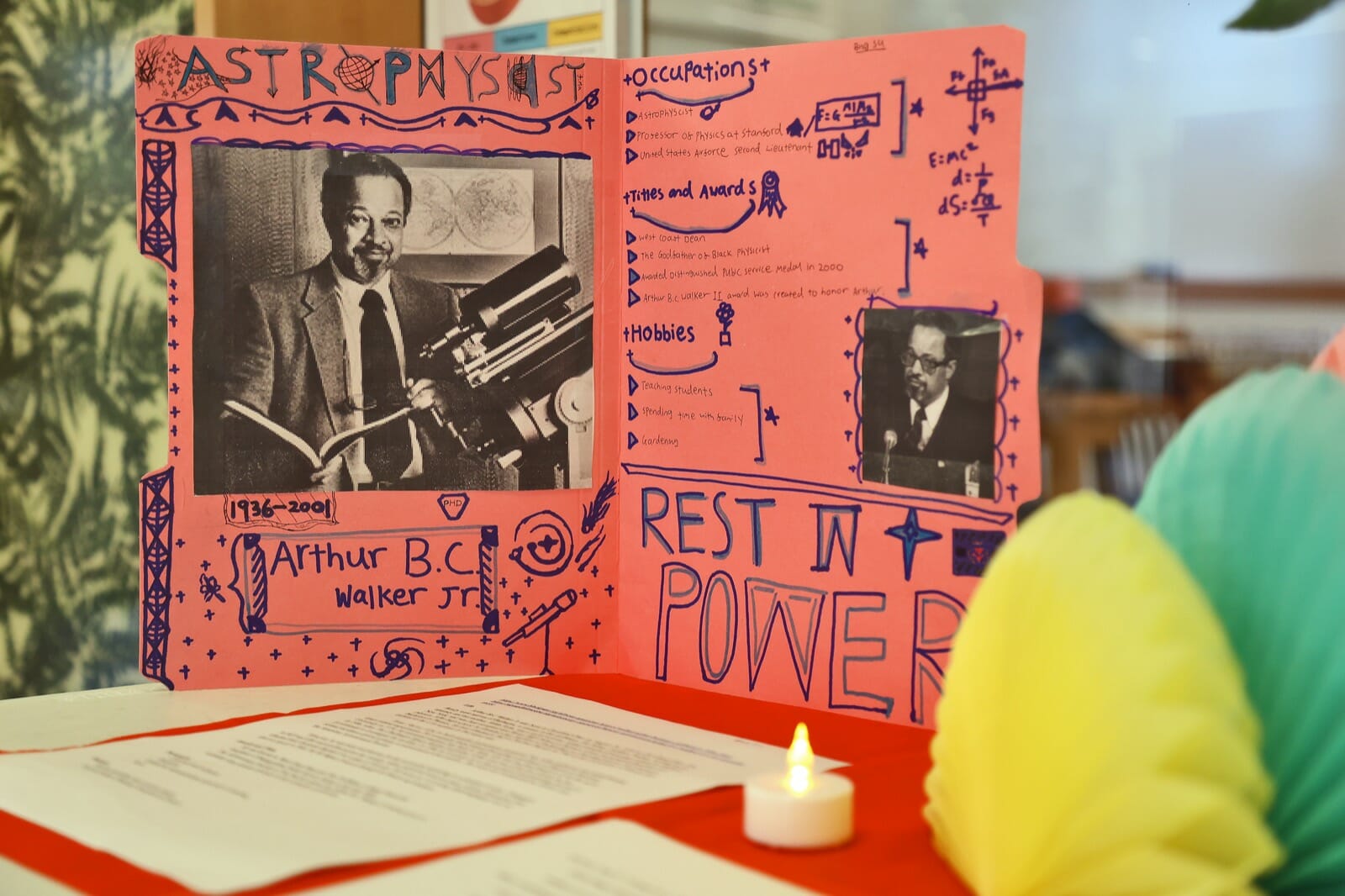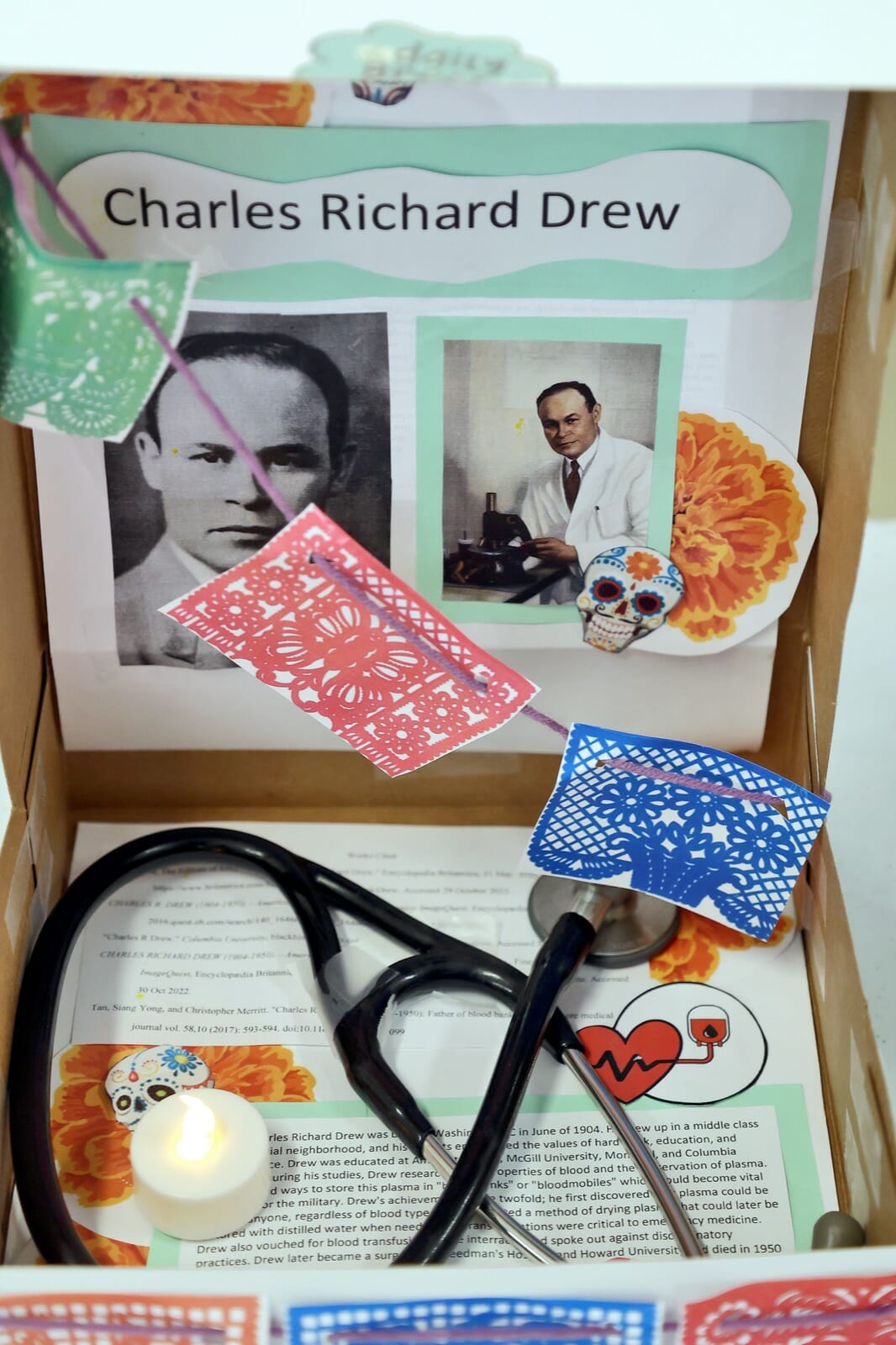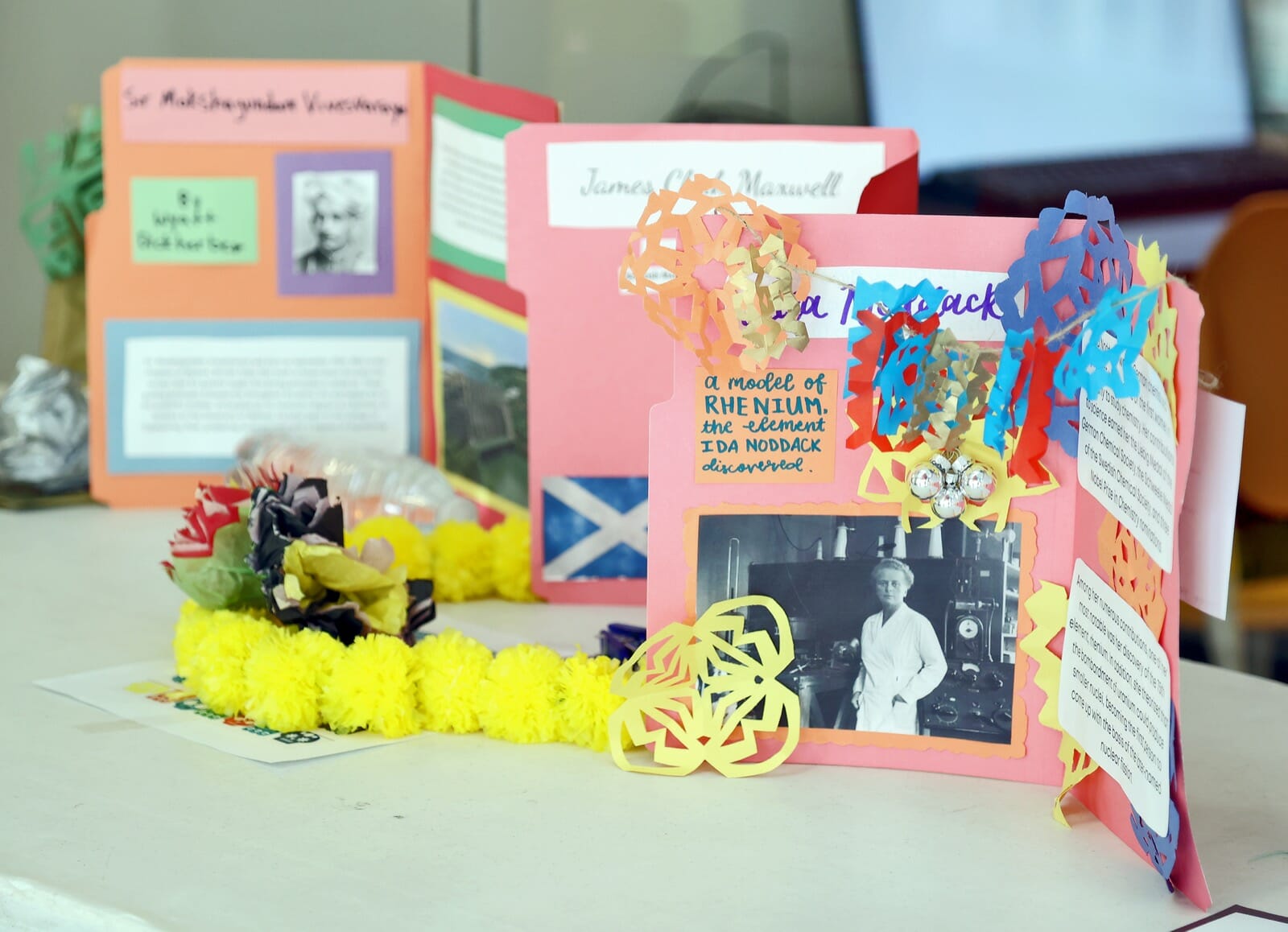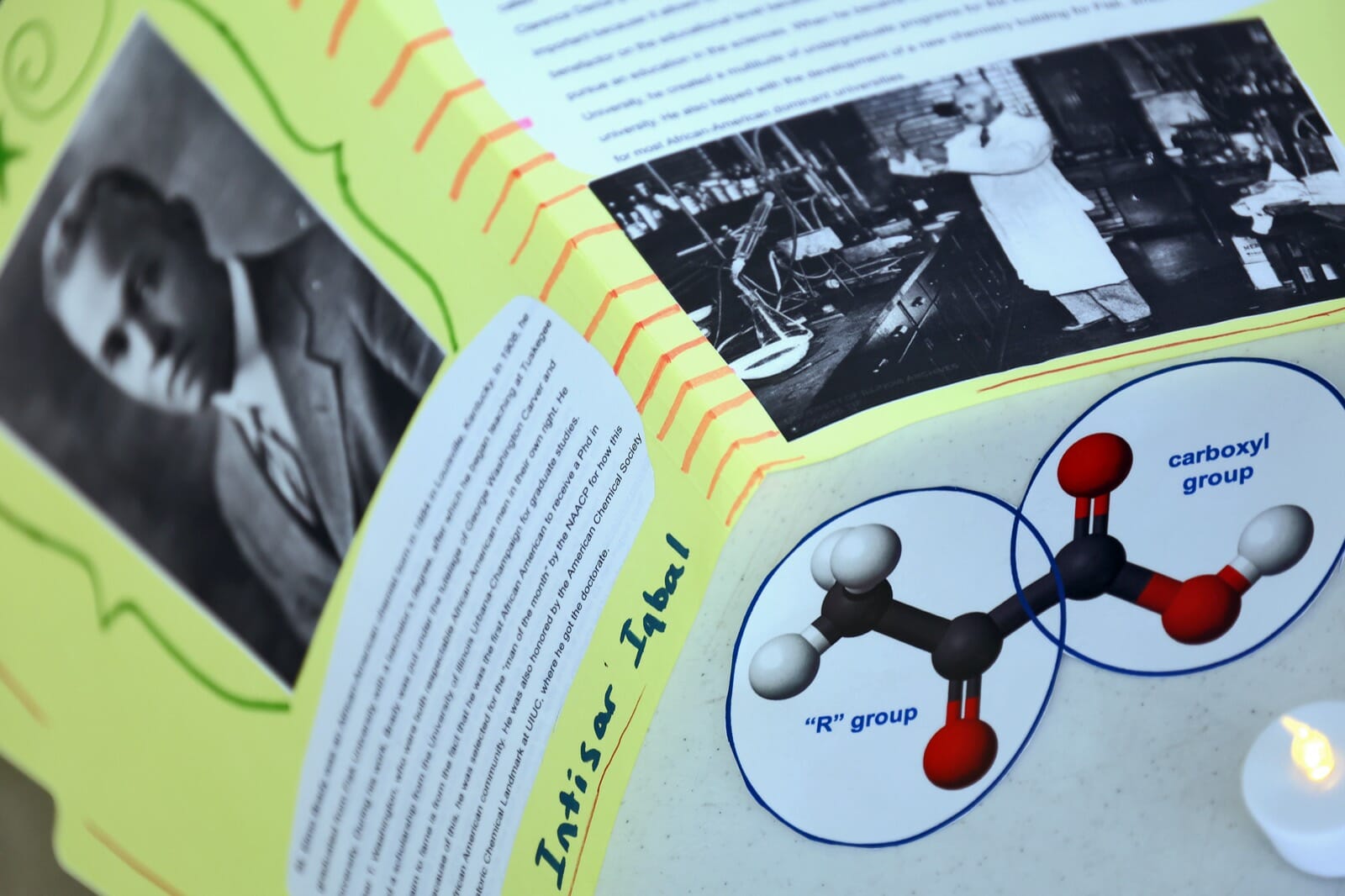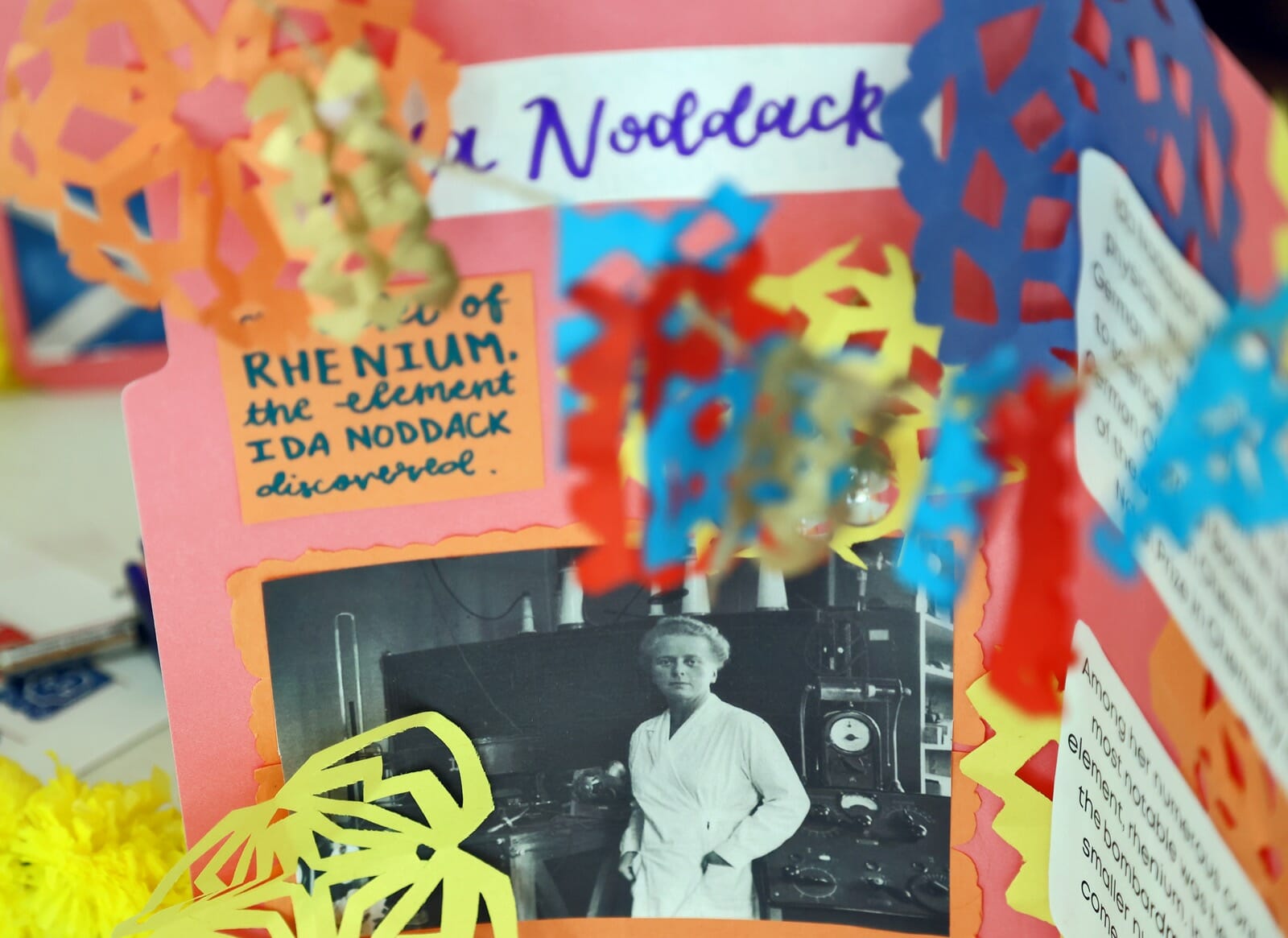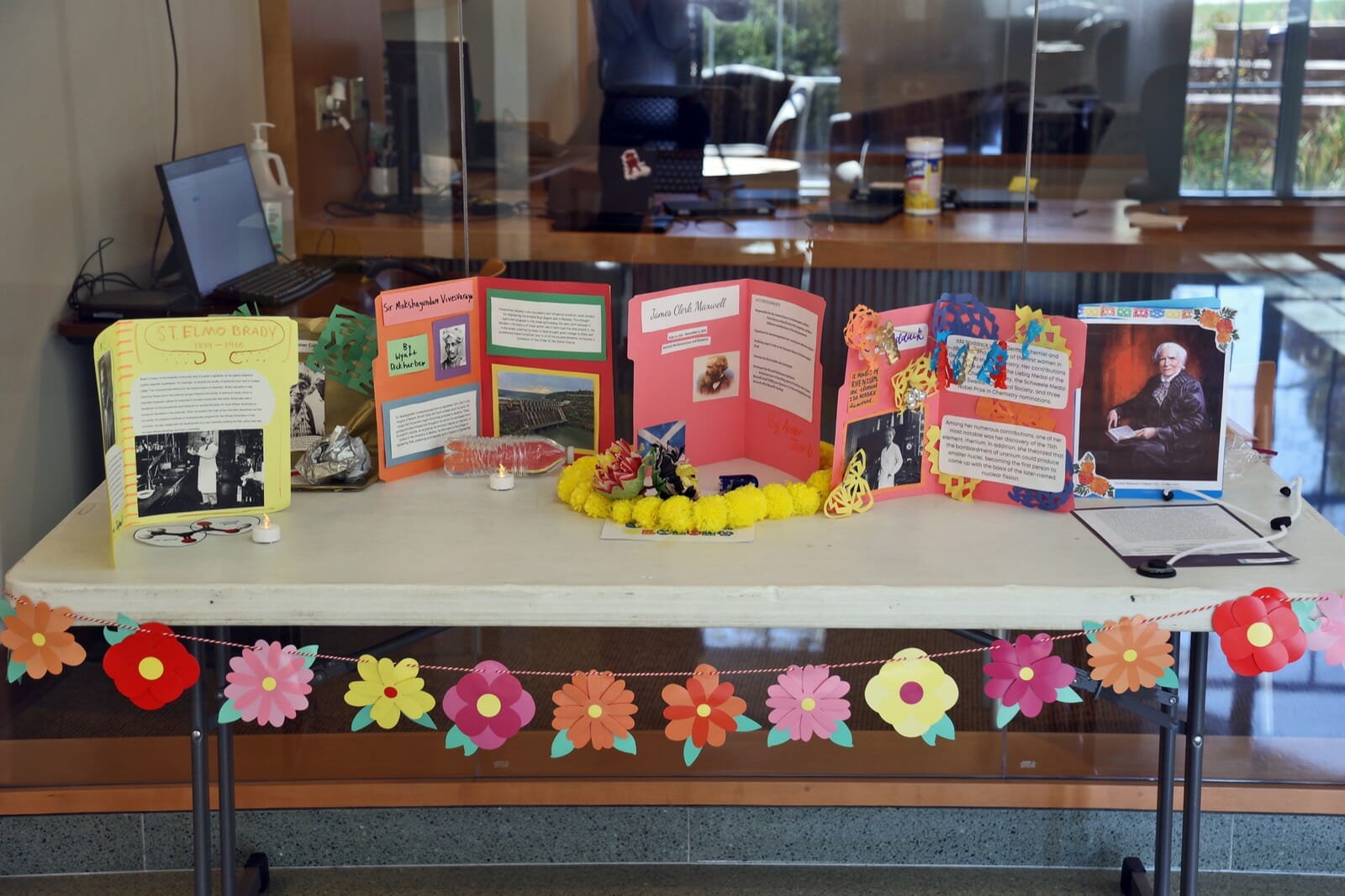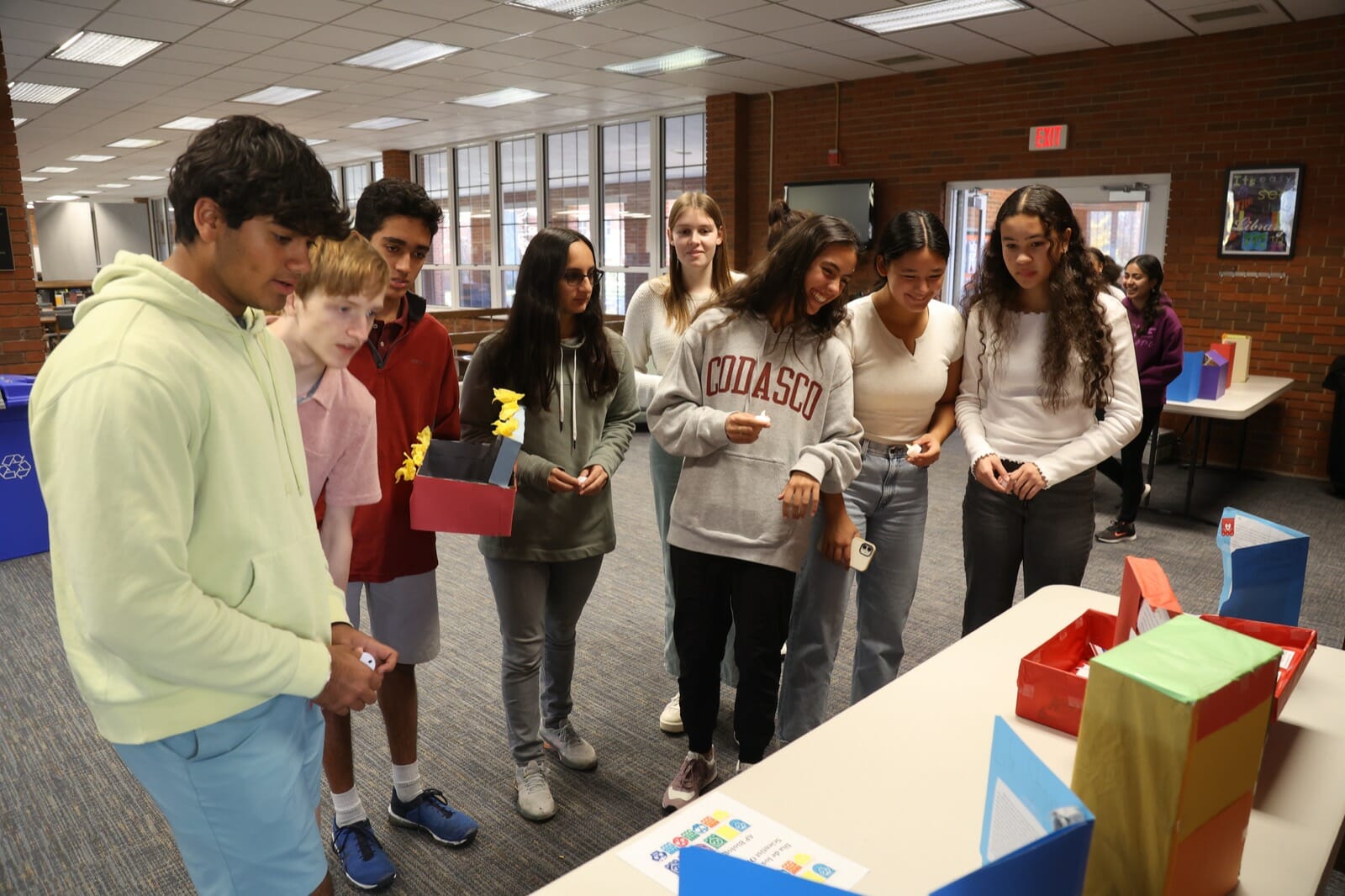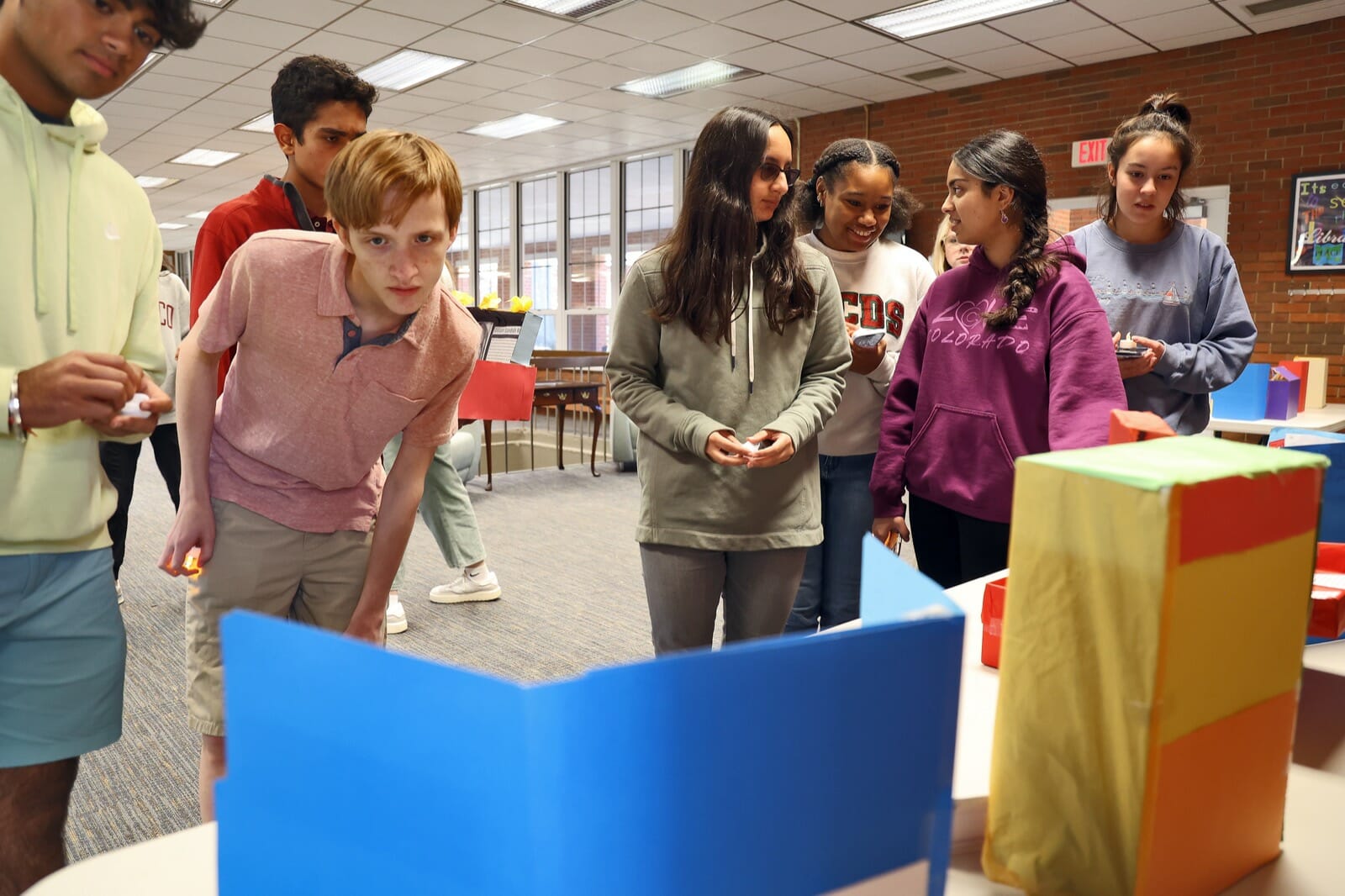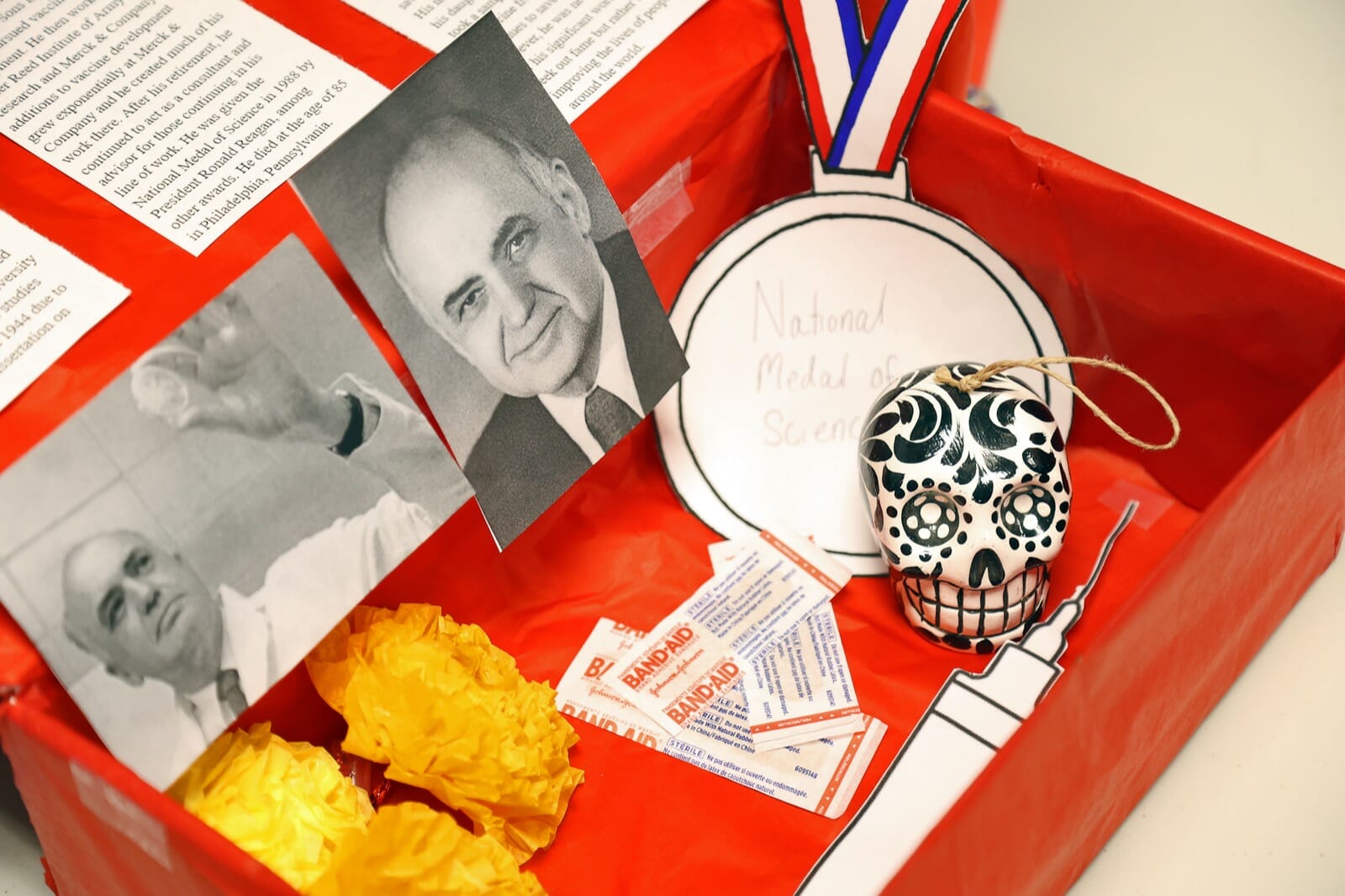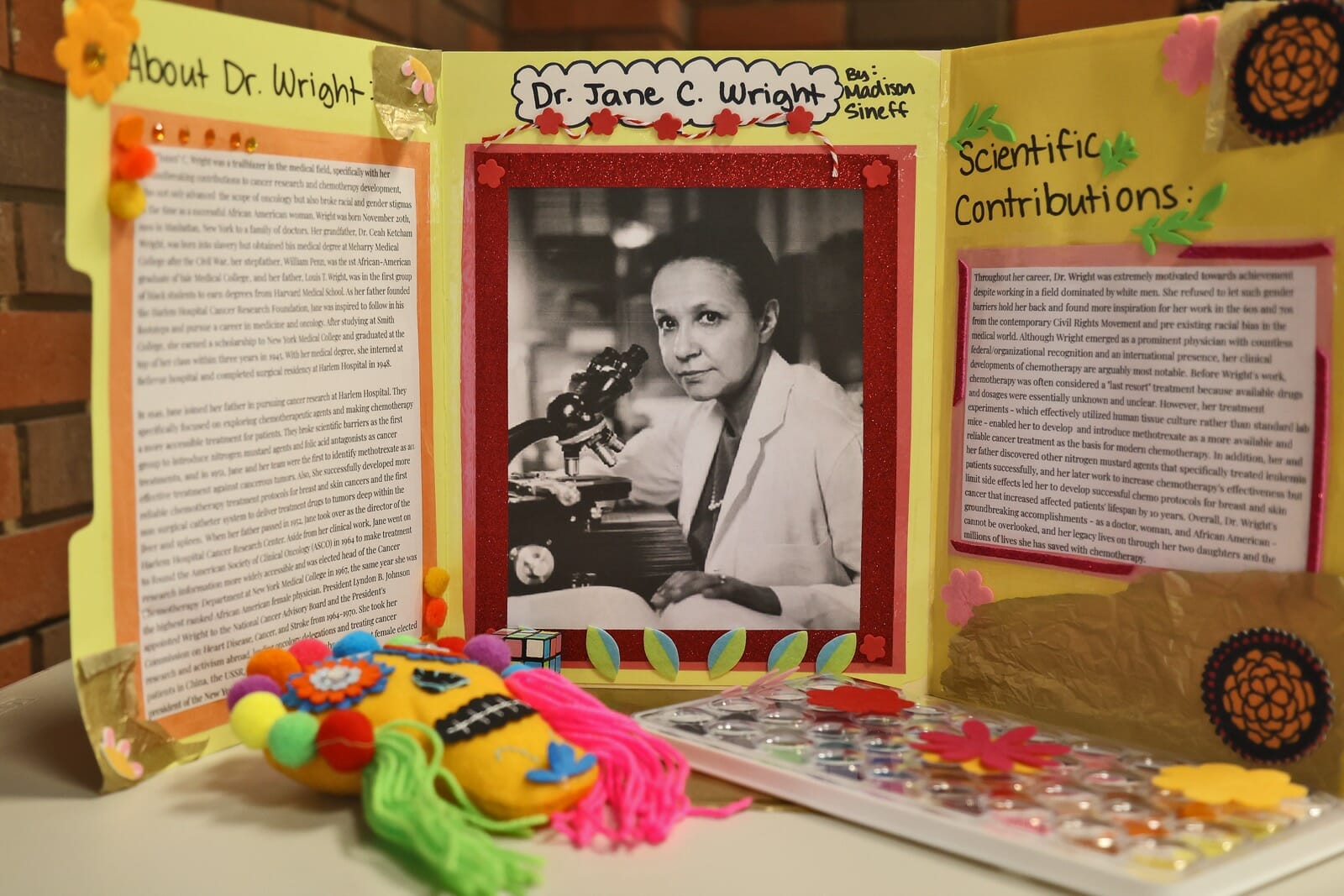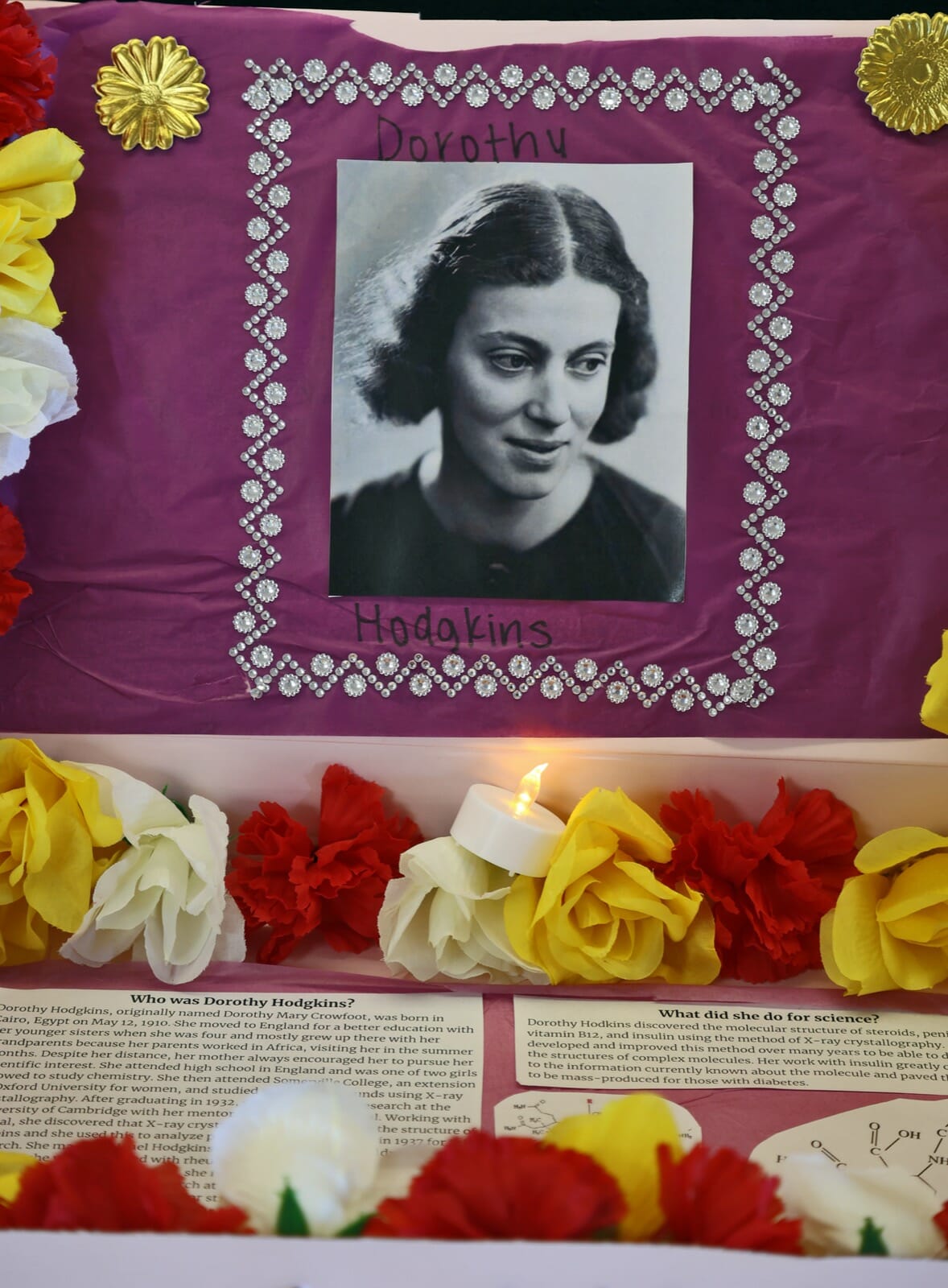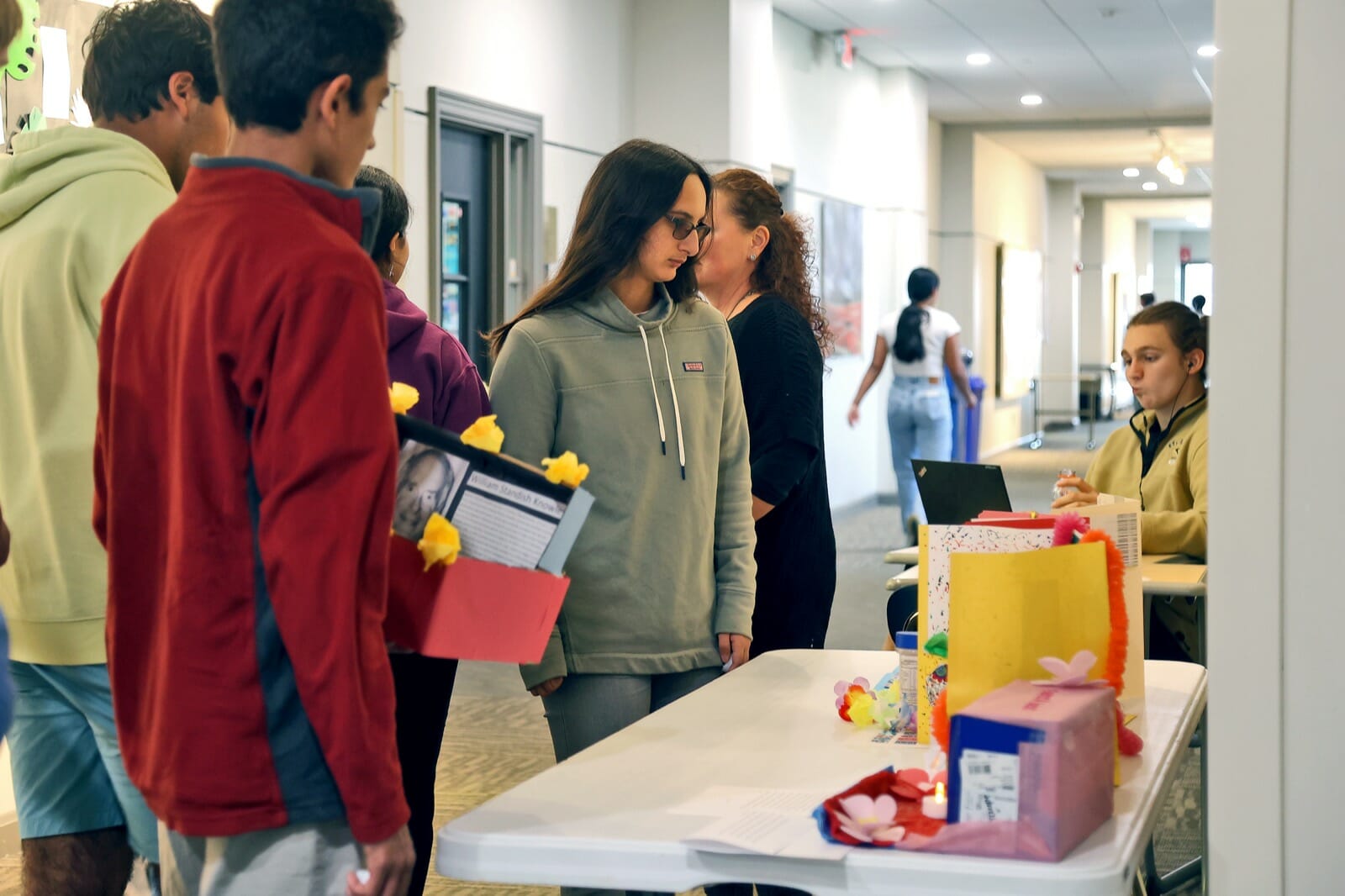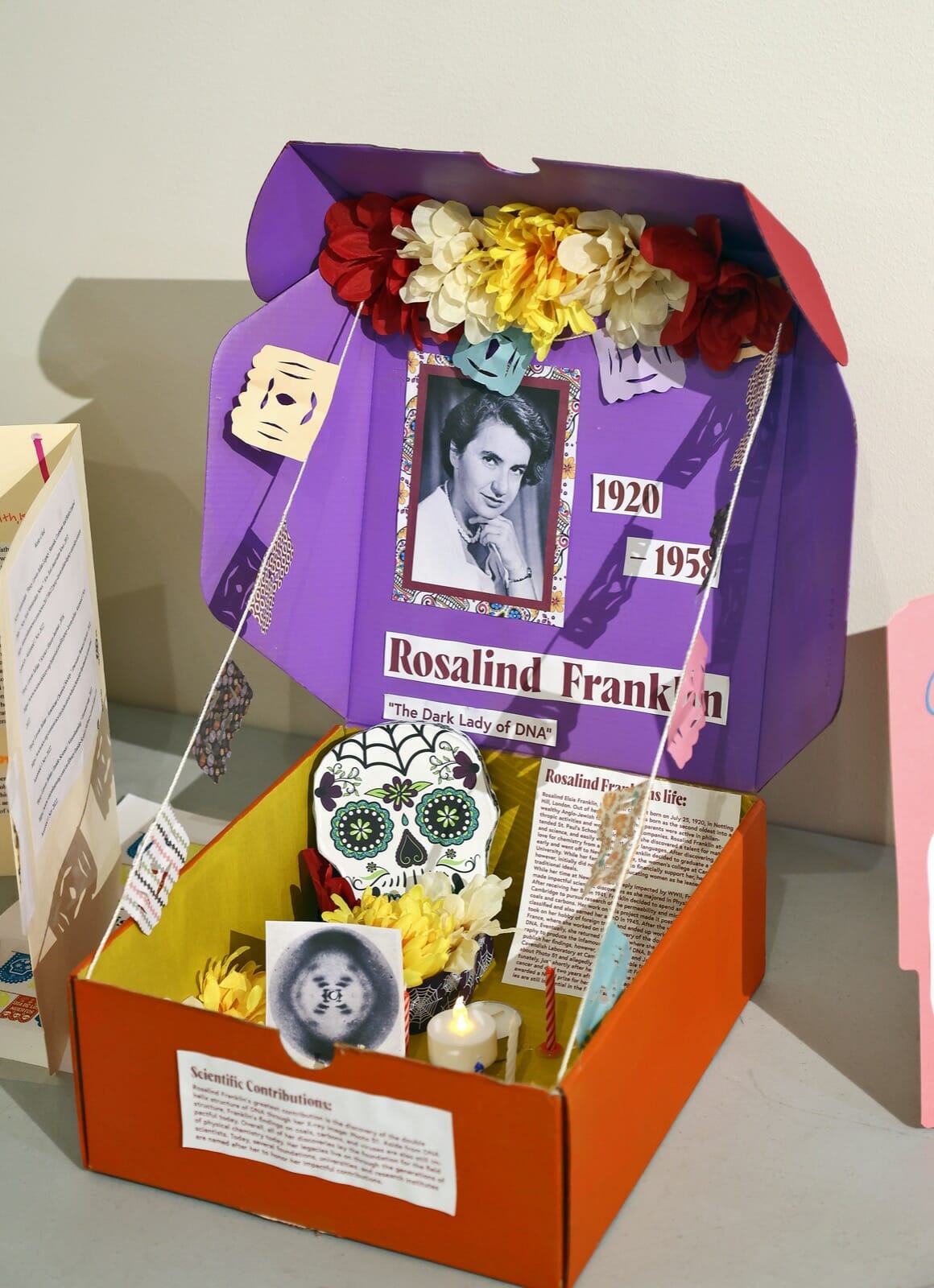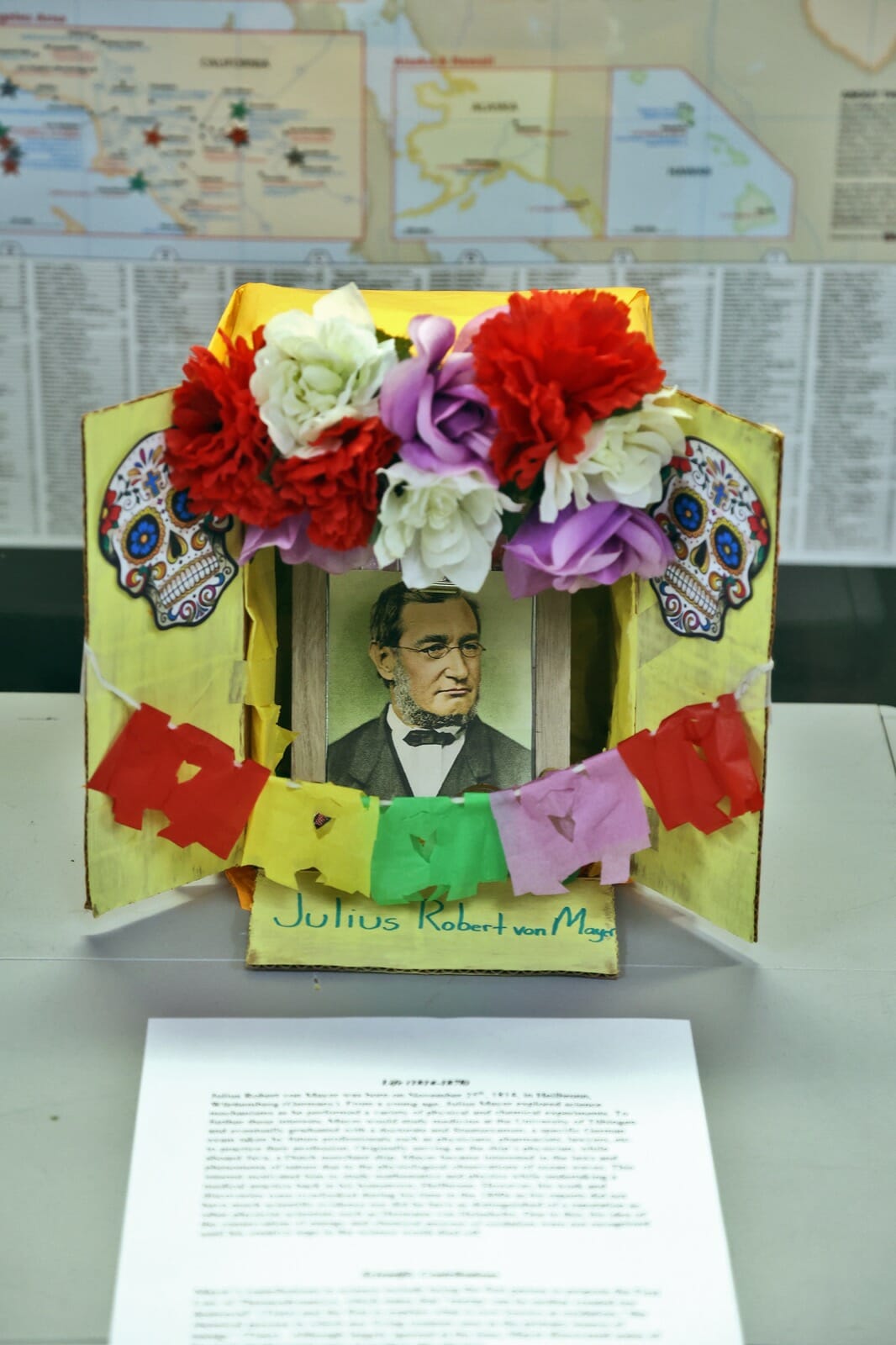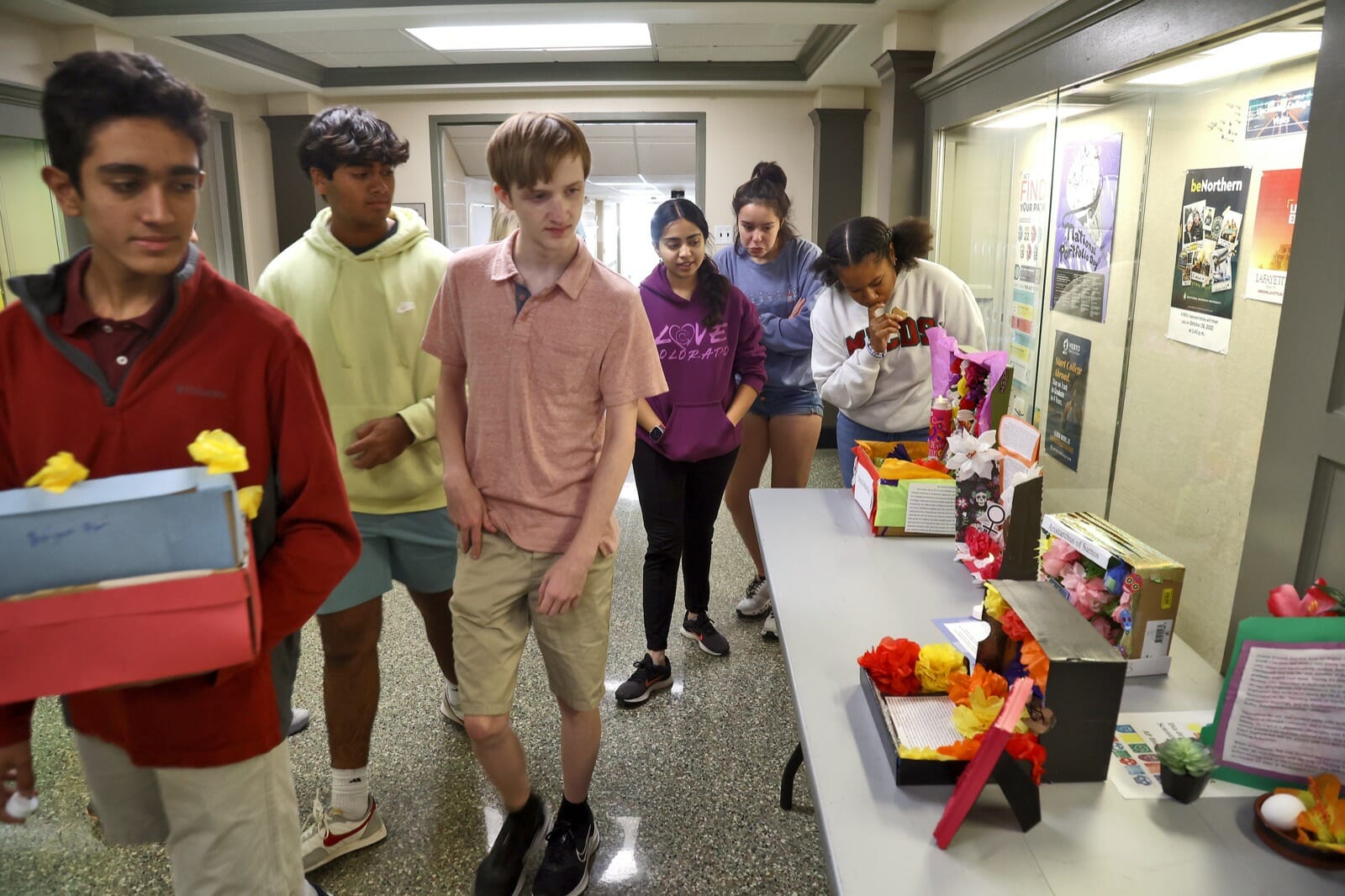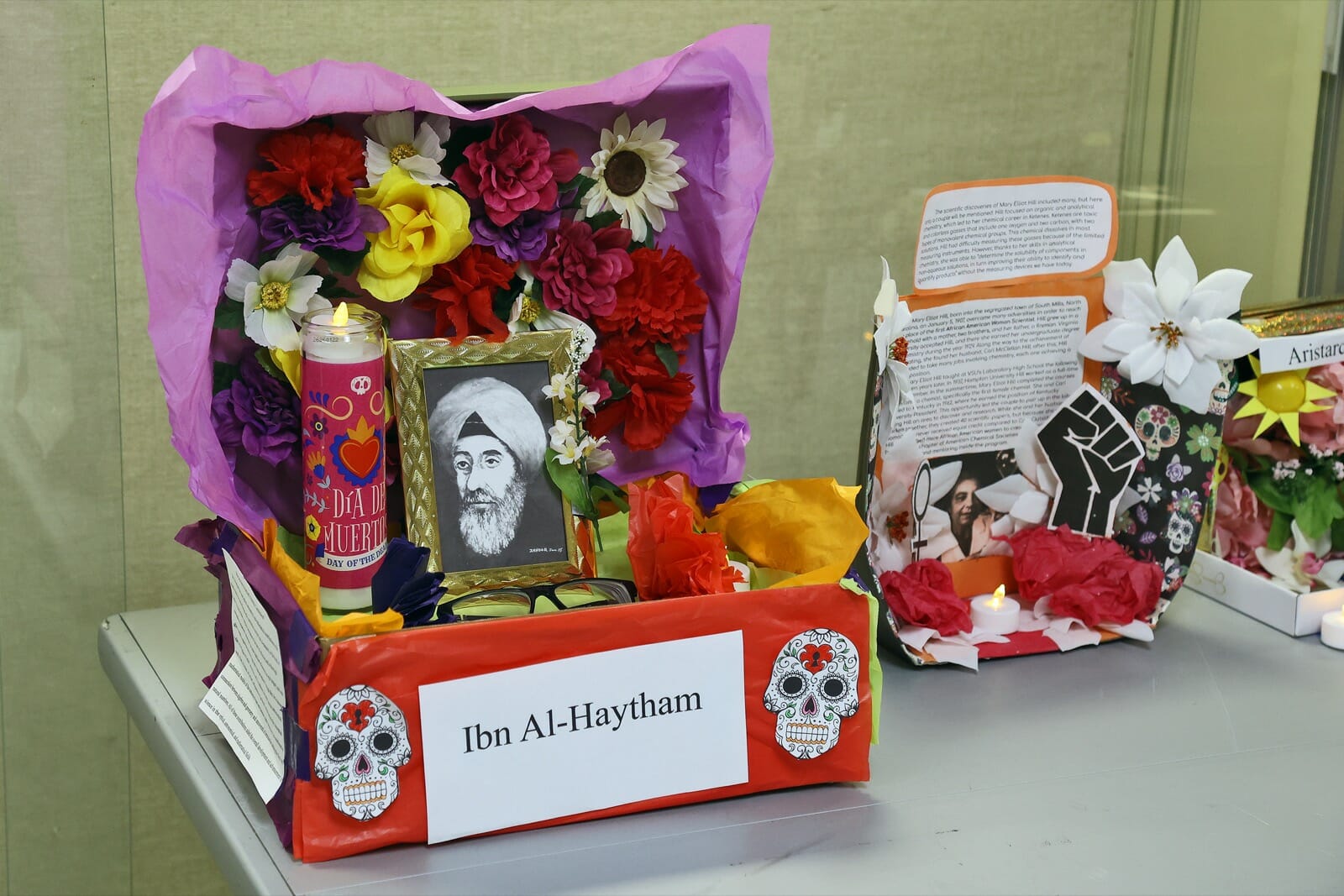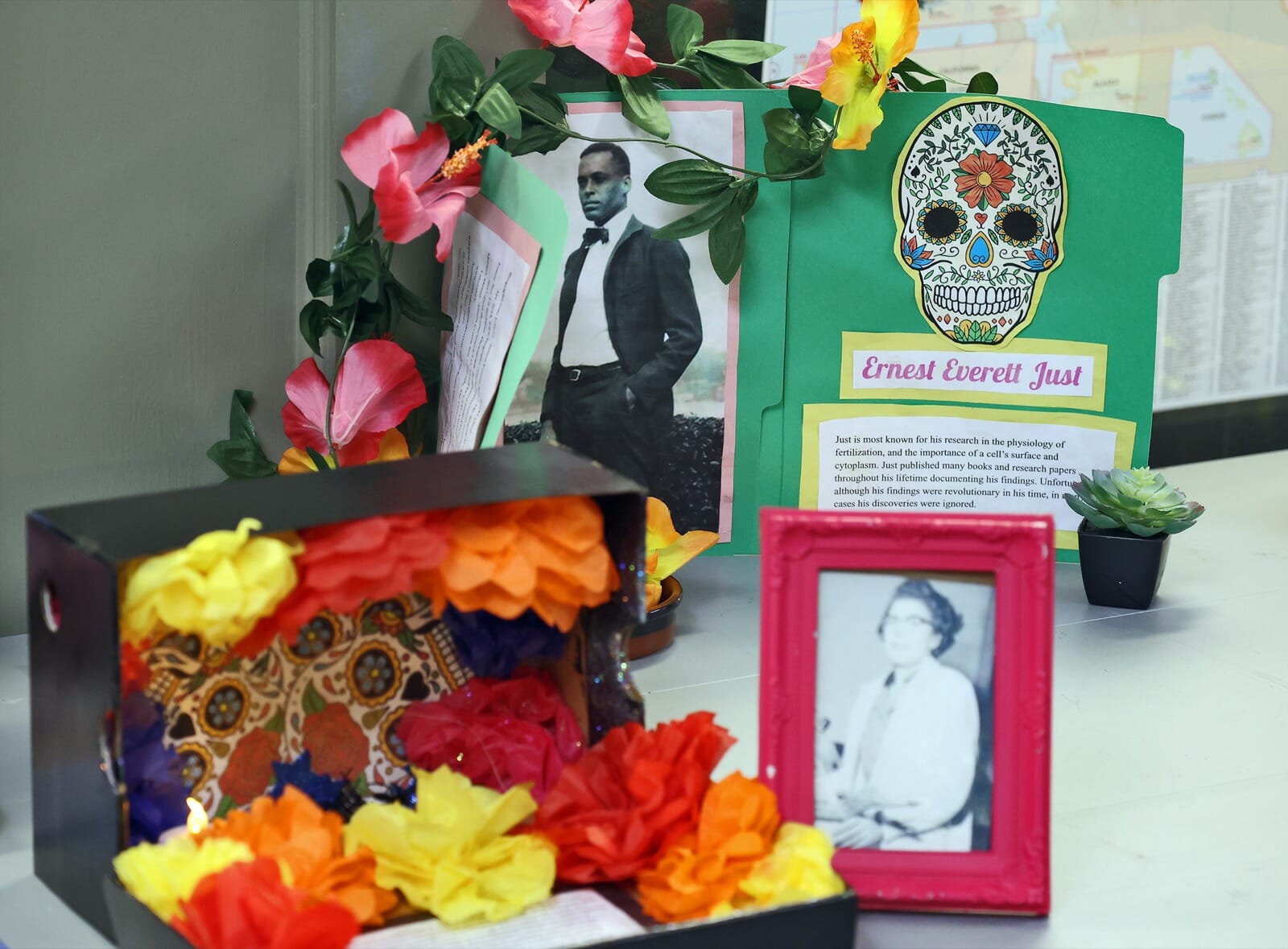Science is a big field with many contributors, and there are often unsung heroes whose work continues to shape research, exploration, and advancements today. AP Biology Teacher Laura Bradford wanted her students to learn about these foundations while also shaking up the traditional curriculum. Thanks to an online resource, she introduced a new, fun project this year: Día de los Muertos Scientist Ofrendas.
An ofrenda, or offering, is typically placed on a home altar during Día de los Muertos (Day of the Dead) celebrations. Bradford challenged her students to create ofrendas for “lesser-known” scientists. “This project draws attention to the collaborative nature of scientific progress while also acknowledging that, whether by accident or design, many people who have contributed to scientific knowledge are not given the full recognition they deserve,” she said. “In this project, students research a “lesser-known” scientist who has now passed on and identify the contributions they have made to humanity. They then built small ofrendas to help educate others about their scientists.”
Arjun Puri ’25 introduced the project to his Upper School classmates at an assembly, ensuring everyone would know what these altars scattered around the US buildings represent. He said, “In honor of Día de los Muertos, AP Biology has been working on an ofrenda project that I wanted to tell you all a little bit about. Starting tomorrow, you will see ofrendas made out of ordinary materials, such as manilla folders or shoeboxes, placed around the school. Each ofrenda is dedicated to a deceased, lesser-known scientist. Please feel free to check out the projects and learn about a scientist whom you may not be as familiar with.”
Puri researched William Standish Knowles, whose daughter, Lesley Knowles McIntire ’66, was a history teacher at MICDS. He said, “I really enjoyed working on the project, and it was my first time doing something for Día de los Muertos outside of my Spanish class. I chose to research William Knowles after hearing from Ms. Bradford that his daughter actually taught briefly at MICDS and that Mr. Knowles worked at Monsanto for much of his life. All of the scientists students chose to research are lesser-known, meaning that most of us, including me, knew virtually nothing about them prior to the project. It was a great experience getting to familiarize myself with a scientist whom I didn’t know much about.”
“This is the first year for it, so I wasn’t sure exactly how it would turn out, but I saw some really great work done by students!” said Bradford. “We did a walk-through in each class, and students completed a short reflection after.”
Hala Nazzal ’24 set up her ofrenda in May Hall, outside the College Counseling offices. “Through the building of my ofrenda, I was able to learn about Ibn Al- Haytham,” she said. “Ibn Al- Haytham was an Arab Muslim man who wrote many novels, his most infamous being the Book of Optics. The book influenced the development of modern-day optics and noticeably changed the way light and vision are understood.”
Bradford appreciates the opportunity to take learning beyond the strict guidelines required to prepare for the Advanced Placement test. “I think that the project overall was a success. I’ve heard from several other teachers (even Spanish teachers!) who have complimented the work that these kids did,” she said. “As with any project that you do the very first time, I wasn’t sure how well received this project would be. AP-level classes are often very curriculum-driven. It’s such a fast pace and there is so much content to learn, that I can rarely ever give the students time to just appreciate science (or scientists). MICDS gives us such opportunities to try out new ideas, always with full support of the administration, so we decided to give it a go!”
Kelly Zhao ’24 aspires to a career in the STEM field and found inspiration through her research of Rosalind Franklin. “I thought that her story as a female scientist and the struggles she faced surrounding the issue of sexism allowed many women to follow that same path. In a society where women in the STEM field are still not fully offered equal opportunities and pay as men, Rosalind Franklin will remain an icon for generations beyond,” she said.
Bradford is pleased that the project went so well. “Overall my students have given positive reviews of the work, some saying it was a nice break from the ‘traditional’ reading of textbooks, and others talking about how creative their peers are. Many have expressed appreciation for learning about scientists they’d not heard of before. And sometimes a scientist who is considered “unknown” or “underrepresented” in our country is actually someone who is very popular in their home country.”
Well done, AP Bio students, and felicidades (congratulations) on creating wonderful tributes to these incredible scientists.
